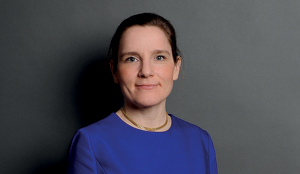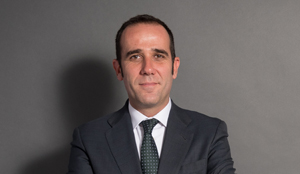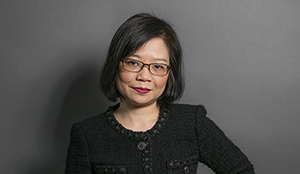Technology & Communications: Trends and developments to look out for in 2018
As 2017 draws to a close we have asked our experts supporting technology & communications clients from around the world to identify some of the digital technology trends and emerging legal issues their clients are facing.
Our lawyers based in Australia, Belgium, Denmark, Finland, Germany, Hong Kong, Italy, the Netherlands, Spain, Sweden, the UAE and the UK have contributed to this article but many of the trends and developments will have a global reach and a significant impact on the Technology and Communications sectors in the year ahead.
Adaptive Security Architectures
Agile and DevOps
Alternative Dispute Resolution
Artificial Intelligence
Augmented Reality & Virtual Reality
Autonomous Vehicles
Blockchain
B2B Apps platforms
Competition
Connected cars
Convergence
Data Sharing & Data Pools
Data Sovereignty
Digital Enablement
Digital Transformation
Digital Business & eCommerce
Enterpise Resource Planning
Expansion of Mobile
5G
GDPR & NIS Directive
Internet of Things
Open Source
Payment Services
Smart Cities
Satellites
Software Defined Networking and Network Function Virtualization
Virtual Assistants - Voice
Adaptive Security Architectures
Software/Machine defined networks and the ever increasing complexity of data traffic pose a great number of added security challenges: The evolution of digital technology platforms, intelligent digital mesh and application architectures means that security has to become equally adaptive and fluid. Multi-layered adaptive security and use of user and entity behaviour analytics is going to be essential in managing such risks, relevant to virtually every enterprise. Security in the IoT environment is particularly challenging. Taking data protection and security into account in the earliest stages of design will be necessary for application, solution and enterprise architects.
Maurits Westerik, The Hague
Agile and DevOps
Agile and DevOps are increasingly a mainstream part of the tech industry. However, the commercial & legal models around contracting for Agile and DevOps services are still being fiercely debated and there is not yet a market consensus. Bird & Bird has developed a "toolkit" to help both customers and suppliers contract effectively for Agile and DevOps projects.
Ian Edwards, London
Alternative Dispute Resolution
Several ADR studies and institutions have detected an increase demand by IT providers and users of sector specialised arbitration and mediation services and counselling for solving of disputes.
Alexander Benalal & Pablo Berenguer, Madrid
Artificial Intelligence
AI is becoming part of the mainstream Tech environment. Virtually all tech companies are now looking to utilise AI – and in particular machine learning – as part of their solutions.
Companies need to be aware of the legal consequences arising from the adoption of AI. For example, more regulated sectors, such as Financial Services and Healthcare, may have regulatory issues associated with the adoption of AI. AI may also have an impact on the allocation of risk in the supply-chain. AI solutions are inherently probabilistic in nature, so the allocation of risks between customers and suppliers will need to be re-assessed.
Roger Bickerstaff, London
Augmented Reality & Virtual Reality
AR and VR will be a source of innovation in how we interface with technology in both consumer and business contexts. These technologies are now included and supported on mobile platforms. This is likely to further change gaming (building on the success of Pokemon Go), eCommerce (e.g. by allowing 3D images of furniture to be shown to scale in your home), in-store retail, transport and navigation, and other industries.
Barry Jennings, London
While AR (an overlay of content on the real world) and VR (an immersive computer-simulated reality) have similarities, they could evolve in completely different ways as they become adopted by a diverse range of industries such as communications, entertainment, gaming, healthcare, media, retail, and others. It will be interesting to see how these develop and if the use and approach of one industry dominates, setting industry standards for others.
Johan Bohm, Stockholm
Autonomous Vehicles
By 2020 it is expected that the [Australian] regulatory landscape will be ready for driverless vehicles and the idea that a "driver" will be the software. As cars become mobile computers which communicate with other cars and street furniture, the change and disruption to traditional supply chains and insurance models will also have to change.
Hamish Fraser, Sydney
Increasing synergies between the Nordic tech and automotive industries pave the way for driverless cars through 5G and mobile communications technology.
Hampus Vallien, Stockholm
Blockchain
In 2018 we anticipate an increase in real life blockchain use cases, building on the basic introductions many larger corporations have had to the opportunities blockchain offers. In response to this Bird & Bird and the Copenhagen University Institute of Computer Science are developing a seminar series for organisations looking to engage in actual blockchain projects, with hands on learning, within programming of smart contracts.
Martin von Haller, Copenhagen
B2B Apps platforms
B2B Apps platforms is another tech trend moving from B2C into B2B. Platforms enabling companies to distribute and share applications with other business haven taken off, in the automotive, energy, healthcare and retail sectors, amongst others. The company who manages to become the App Store or Google Play of a sector has an inherent advantage in distributing products and services via apps, next to monetarizing the platform. Issues are different from B2C, questions arise around liability, telecommunication law, standardisation, competition law and data ownership. The topic is often linked to IoT when platforms enable communication of things between various players.
Fabian Niemann, Dusseldorf
Competition
In 2018 the technology, communications and media sectors remain in the spotlight of Competition Commissioner Vestager in Brussels. We expect continued debates on:
- whether in its merger policy, the Commission must adopt a more relaxed stance - some arguing the EU needs larger tech, comms and media "champions' or a tougher stance - others arguing recent policy was too relaxed particularly in (mobile) communications
- the legality and impact of the recent 2.42 billion euro fine imposed in the comparison shopping case against a US online search giant under its abuse of dominance rules (now in Court), while other investigations on online search advertising and Android are pending
- use of (pricing) algorithms which according to some may lead to new forms of collusion and thus new types of EU antitrust cases
- EU State aid policy regarding billions of EU/national public funds currently being earmarked for broadband, mindful of increased EU broadband targets and the significant impact on infrastructure development business plans
Hein Hobbelen, Brussels
New challenges for antitrust and regulatory watchdogs: contents and barriers to interoperability are likely to increase their relevance in the next few years. The competent authorities, aware of these trends, have started to plan its regulatory activities oriented towards the promotion of competition, the protection of consumers and users, the guarantee of an efficient allocation of the scarce resources, supporting the development of communication networks and digital services, the promotion and protection of pluralism, and the guarantee of equal access to the media and the promotion of a culture of legality in the use of digital works, combining the principles of transparency, effectiveness and efficiency in their administrative action.
Osvaldo Lombardi, Federico Marini Balestra & Lucia Antonazzi, Rome
Connected cars
Connected cars will become the major issue in cellular standards-essential patent (SEP) licensing. BMW has been the first to take a license from Avanci, covering between a third and a half of all cellular SEPs in the industry. Other patent owners and other car makers will start to follow suit. But the debate about who should take a licence: the car maker or its telematics suppliers, may give rise to disputes.
Richard Vary, London
Convergence
The blooming of media companies: technological convergence increasingly blurs the boundaries between Telcos and Broadcasters. The two industries face unstoppable competition from technology giants, as well as deep regulatory scrutiny of in-sector M&A.
Osvaldo Lombardi, Federico Marini Balestra & Lucia Antonazzi, Rome
Data Sharing & Data Pools
The creation of multi-party data pools and complex data sharing arrangements between industry players is a trend that reflects the increasing demand for value-added services based on big data analytics (e.g. predictive maintenance).
Henriette Picot, Munich
Data Sovereignty
As electronic communications services (including OTT and IoT services) become more global in nature, data sovereignty is becoming an increasingly important consideration. Data sovereignty can manifest itself in the form of mandatory data localisation requirements that can apply in respect of both personal and non-personal data and that can impact on network architecture and service deployment. Mandatory data localisation requirements within the EU that apply in respect of non-personal data are currently being addressed at the EU level in the form of a draft Regulation.
Cathal Flynn, London
Digital Enablement
Over the coming year, whether B2B or B2C we will see more and more companies move to a digitally enabled business cycle. To do this AI, IoT, big data analytics and mobile will be in the foreground.
Howard Rubin, London
Digital Transformation
The Middle East is witnessing a digital transformation. Economic diversification in oil exporting Arab countries is driving focus on and investment in digital. All of the Governments in the GCC have developed ambitious digital strategies. At the same time, significant investment in innovative projects and infrastructure such as smart cities, IoT, 3D printing, autonomous vehicles and drones, the hyperloop and artificial intelligence will radically change people's lives in the region.
David Bintliff, Dubai
Digital Business & eCommerce
Competition
The rise of online-only distributors will continue and hasten, even for luxury goods, as brand owners find it increasingly hard to justify obligations requiring distributors to have an actual shop. We should also expect further action from the German competition authority in ecommerce markets, and possibly also from the UK CMA which has specifically strengthened its tech expertise.
Victoria Moorcroft, London
Regulation
The ubiquity of the internet and smart phones has seen online marketplaces thrive like never before. These market places take many different shapes and forms and regulators are looking closely at all of them and trying to respond. The year(s) ahead will see regulators start to stamp their authority over these marketplaces and the outcomes will not always be favourable for operators.
Hamish Fraser, Sydney
Personalisation
The retail sector is undergoing a substantial transformation, being led by a range of innovative technologies. One key area is personalisation – achieving a truly personalised shopping experience is the holy grail for many retailers, which will rely on adopting machine learning and big data solutions while balancing data privacy issues.
Ian Edwards, London
Enterprise Resource Planning
On premise ERP transformation projects are increasingly moving to cloud based services, involving significant challenges in terms of intellectual property, security and data protection.
Alexander Benalal & Pablo Berenguer, Madrid
Expansion of Mobile
Another highlight will be the continued expansion of mobile. Anderson Horowitz have replaced their “software is eating the world” with “mobile is eating the world”. 2018 will see a massive extension of mobile computing.
Howard Rubin, London
5G
Network regulation and the implications of 5G and wireless substitution. Non-standalone 5G accelerates fixed to wireless substitution: will Regulators rethink markets?
Verizon's recent announcement of the deployment of a non-standalone 5G wireless access network is confirmation that 5G makes wireless a real substitute for fibre, and not just at the margins. It will have major implications for how competition and telecommunication regulators around the world view mergers between carriers and allegation of abuse of dominance by fixed line operators. In short, the traditional advantages enjoyed by incumbents in terms of a fixed line network are being further eroded by 5G and faster than many expected. This should make it easier for fixed line operators to merge but it also challenges the viability of fibre network rollouts, particular in areas which can be served by wireless more cheaply. We will watching this space very carefully!
Thomas Jones, Sydney
Making visionary technologies like IoT or driverless cars work in practice will require the deployment of advanced, broadband and highly-resilient mobile networks. 5G is the mobile standard under development for this objective. The German national regulatory authority has already taken first steps towards making available spectrum for 5G in the 3.6 GHz band and will likely tender it in an auction in 2018.
Valerian Jenny, Frankfurt
GDPR & NIS Directive
GDPR and NIS Directive approach to regulation will lead to the need for more compliance programs. In May 2018 two important legislative project will come to the forefront: The NIS Directive will need to be implemented by Member States by then, while the GDPR will directly be applicable in all Member States. Both laws stress the importance of assessments and systematic analysis of risks. This is best done via compliance programs.
Tobias Bräutigam, Helsinki
The upcoming NIS Directive combined with the GDPR will change the legal framework in which any company that operates in the EU is acting. Most incidents will have to be assessed and reported, fines might be applied, and this will make cybersecurity plans a priority in terms of technical defenses, dedicated procedures and company culture. Best practices will constantly change and in order to face this ongoing and ever evolving risk companies will have to organize dedicated resources, internal policies and cyber-crisis response teams
Roberto Camilli, Milan
The rise of the activists and private enforcement. Once the GDPR is applicable, NGOs and activists are likely to choose targets for strategic privacy law suits. The Austrian Privacy activist Max Schrems' nonprofit NOYB is the first one to emerge, promising to make use of the GDPR's article on collective actions, but more will come.
Tobias Bräutigam, Helsinki
The GDPR will impact the telecommunications industry less than many others due to its Art 95 stating that in the context of operating telecommunications networks and providing telecommunications services, the current ePrivacy Directive 2002/58/EC remains applicable and takes precedence over the GDPR. At the same time, the EU Lawmakers are working on the proposal of an ePrivacy Regulation with the timeline for completing the legislative process currently open. Some elements of the proposal primarily concerning advertising and online tracking are highly controversial while its provisions for the telecoms sector will probably not bring major changes to the existing legislation. While the regulations is unlikely to become applicable next year, the debate on its controversial suggestions can be expected to become even more heated next year.
Valerian Jenny, Frankfurt
Internet of Things
We will see more consumer IoT products in the market at affordable prices as more and more traditional industrial manufacturers venturing into offering "connected" products. Looking at China, there is a real push by the Government to hasten the development of IoT from now until 2020: connected cars, smart homes, healthcare and wearable techs as well as more broadly its application in the agricultural sector.
Michelle Chan, Hong Kong
Smart meters, connected devices and increasing energy prices means consumers will have at their fingertips the ability and the motivation to better manage their power consumption. Power companies will need to start helping their customers manage their consumption and will offer a variety of tools to facilitate this.
Hamish Fraser, Sydney
With ever more connected devices coming onto the market (for consumer, industrial and civic purposes), we soon expect to see IoT platforms starting to jostle for pole position as who will be the leading connector and interpreter of those devices and everything they can do for us and... say about us.
Ronald Hendrikx, London
Open Source
As multinational organisations from a range of traditional sectors review their open source policies, we have seen a growing trend towards the adoption of less conservative and more proactive and strategic uses of open source software.
Martin von Haller, Copenhagen
Payment Services
2018 is the year that PSD2 will become applicable throughout the EEA, forcing banks to open up their infrastructure to Third Party Players (TPPs). Those TPPs will be allowed to access payment accounts in order to provide new value-added services to consumers, such as account aggregation (i.e. one app on a smartphone or tablet consolidating the financial data of a consumer from his various accounts held at different banks). Banks are expected to give access through APIs (Automated Programing Interface).
Scott McInnes, Brussels
PSD2 is one of the main drivers of the ongoing developments and changes in the payment services market. Together with tech evolution, innovation, new entrants and demand for real-time experience, PSD2 is contributing to changes both in services and infrastructure.
Hans Svensson & Johan Bohm, Stockholm
Smart Cities
Connected devices make citizens important users as well as providers of data. We expect to see cities focus more on how to harness this digital interaction to understand how citizens use the urban environment and how it can respond and collaborate with systems to make cities smarter, more resilient and sustainable. For case studies, please visit www.sustainablesmartcities.org .
Ronald Hendrikx, London
There are a large number of companies looking at using beacons, sensors within mobile phones, cameras and other technologies to measure how people move around built environments, especially within the context of smart buildings and cities, and large semi-public buildings like shopping malls, airports and universities. These companies allow businesses to build a far better understanding of how people move around their buildings, provide them with better contextual information or services and change their systems and processes accordingly.
Barry Jennings, London
Satellites
New Markets
Recent international studies have identified 60 new markets for the increasing development of satellite services in the next few years including connectivity to vehicles such as trains, cars, planes and ships, improving agricultural productivity, maritime surveillance, value-added locational services, commodity trading and telemedicine.
Joanne Wheeler, London
Data
Satellite data is essential for digitalized services - its availability, integrity and confidentiality is key for example to autonomous transportation. Drive for sustainability creates business opportunities both in Earth-bound satellite services for example in monitoring the Arctic environment as well as in mitigating creation and effects of space debris. New Space economy makes space more accessible - space activities are increasingly carried out by new private players, prompting the need for national space laws to license the activities.
Jenni Tapio, Helsinki
5G Integration
Aiming at mobile broadband users and device-to-device communications, satellites have an increasingly important role to play in the next few years both as a backhaul technology but also as a fully integrated access point for mobile and remote users.
Joanne Wheeler, London
Software Defined Networking and Network Function Virtualization
5G, IoT traffic and digital twin representations are going require more and more from network operators in the way of dynamic network data flow control. The sheer amount of different and quickly changing requests for network changes require some way to automate the network management and responsiveness. SDN and NFV have been talked about a lot, but they are now becoming an essential building block in the network operator's toolkit.
Maurits Westerik, The Hague
Virtual Assistants - Voice
Alexa, Siri and Google Assistant are playing an increasing role in how people interact with technology through speech. This trend in the consumer space is likely to develop quickly as we see voice tools built into vehicles, as well as phones and speakers, and we see third parties build applications (for retail, search, reminders, virtual assistants, education, health and games) using these platforms. As consumers become more comfortable with the technology expect to see more adoption in a business context too.
Barry Jennings, London
Technology is at the core of Bird & Bird, it is what we specialise in and what we are known for globally. Our wide and diversified global client base features market-leading companies producing some of the most sophisticated technology in the world.
If you'd like to know more about how we can help, please get in touch with your relationship partner or the most relevant member of the Tech & Comms team.



















